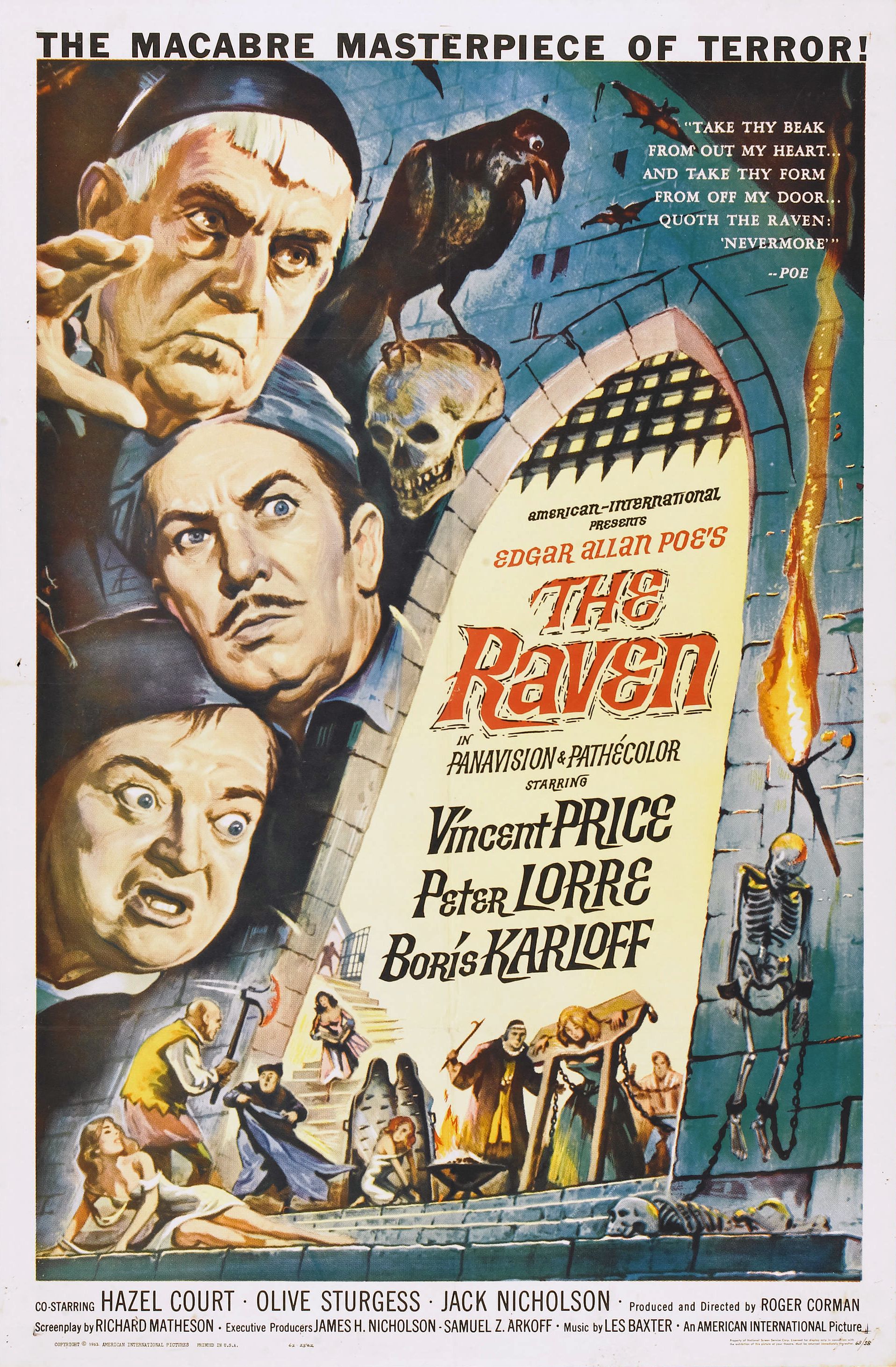|
C-Man (film)
''C-Man'' is a 1949 American film noir directed by Joseph Lerner featuring Dean Jagger, John Carradine, Lottie Elwen and Rene Paul. Gail Kubik based his Pulitzer Prize winning Symphony Concertante on his score for ''C-Man''. Plot U.S. Customs Department Agent Cliff Holden's (Dean Jagger) childhood best friend and boss is murdered while chasing down jewel thieves. He's assigned to find the thieves and solve the murder. The plan is for him to fly to Europe, then catch the same return flight suspect Matty Royal (Rene Paul) will be taking. Cast * Dean Jagger as Cliff Holden, alias William Harrah * John Carradine as Doc Spencer * Lottie Elwen as Kathe van Bourne * Rene Paul as Matty Royal * Walter Vaughan as Customs Inspector Brandon * Adelaide Klein as Minnie Hoffman * Edith Atwater as Lydia Brundage * Harry Landers as Owney Shor * Jean Ellyn as Birdie Alton * Walter Brooke as Joe Reception Critical response The film critic for ''The New York Times'', panned the film when it w ... [...More Info...] [...Related Items...] OR: [Wikipedia] [Google] [Baidu] |
Irving Lerner
Irving Lerner (March 7, 1909 – December 25, 1976) was an American film director. Biography Before becoming a filmmaker, Lerner was a research editor for Columbia University's Encyclopedia of Social Sciences, getting his start in film by making documentaries for the anthropology department. In the early 1930s, he was a member of the Workers Film and Photo League, and later, Frontier Films. He made films for the Rockefeller Foundation and other academic institutions, becoming a film editor and second-unit director involved with the emerging American documentary movement of the late 1930s. Lerner produced two documentaries for the Office of War Information during WW II and after the war became the head of New York University's Educational Film Institute. In 1948, Lerner and Joseph Strick shared directorial chores on a short documentary, '' Muscle Beach''. Lerner then turned to low-budget, quickly filmed features. When not hastily making his own thrillers, Lerner worked as a techn ... [...More Info...] [...Related Items...] OR: [Wikipedia] [Google] [Baidu] |
Richard Widmark
Richard Weedt Widmark (December 26, 1914March 24, 2008) was an American film, stage, and television actor and producer. He was nominated for an Academy Award for his role as the villainous Tommy Udo in his debut film, ''Kiss of Death (1947 film), Kiss of Death'' (1947), for which he also won the Golden Globe Award for New Star of the Year - Actor, Golden Globe Award for Most Promising Newcomer. Early in his career, Widmark was typecast in similar villainous or anti-hero roles in film noir, films noir, but he later branched out into more heroic leading and supporting roles in Westerns, mainstream dramas, and horror films among others. Early life Widmark was born December 26, 1914, in Sunrise Township, Minnesota, the son of Ethel Mae (''née'' Barr) and Carl Henry Widmark. His father, a traveling salesman, was of Swedish descent, and his mother was of English and Scottish ancestry. Widmark grew up in Princeton, Illinois, and lived in Henry, Illinois, for a short time, moving frequ ... [...More Info...] [...Related Items...] OR: [Wikipedia] [Google] [Baidu] |
1940s English-language Films
Year 194 ( CXCIV) was a common year starting on Tuesday of the Julian calendar. At the time, it was known as the Year of the Consulship of Septimius and Septimius (or, less frequently, year 947 ''Ab urbe condita''). The denomination 194 for this year has been used since the early medieval period, when the Anno Domini calendar era became the prevalent method in Europe for naming years. Events By place Roman Empire * Decimus Clodius Septimius Albinus Caesar became a Roman Consul. * Battle of Issus: Septimius Severus marches with his army (12 legions) to Cilicia, and defeats Pescennius Niger, Roman governor of Syria. Pescennius retreats to Antioch, and is executed by Severus' troops. * Septimius Severus besieges Byzantium (194–196); the city walls suffer extensive damage. Asia * Battle of Yan Province: Warlords Cao Cao and Lü Bu fight for control over Yan Province; the battle lasts for over 100 days. * First year of the ''Xingping'' era during the Han Dyn ... [...More Info...] [...Related Items...] OR: [Wikipedia] [Google] [Baidu] |
Film Classics Films
A film, also known as a movie or motion picture, is a work of visual art that simulates experiences and otherwise communicates ideas, stories, perceptions, emotions, or atmosphere through the use of moving images that are generally, since the 1930s, synchronized with sound and (less commonly) other sensory stimulations. Etymology and alternative terms The name "film" originally referred to the thin layer of photochemical emulsion on the celluloid strip that used to be the actual medium for recording and displaying motion pictures. Many other terms exist for an individual motion-picture, including "picture", "picture show", "moving picture", "photoplay", and "flick". The most common term in the United States is "movie", while in Europe, "film" is preferred. Archaic terms include "animated pictures" and "animated photography". "Flick" is, in general a slang term, first recorded in 1926. It originates in the verb flicker, owing to the flickering appearance of early films. ... [...More Info...] [...Related Items...] OR: [Wikipedia] [Google] [Baidu] |
Film Noir
Film noir (; ) is a style of Cinema of the United States, Hollywood Crime film, crime dramas that emphasizes cynicism (contemporary), cynical attitudes and motivations. The 1940s and 1950s are generally regarded as the "classic period" of American film noir. Film noir of this era is associated with a low-key lighting, low-key, black-and-white visual style that has roots in German expressionist cinematography. Many of the prototypical stories and attitudes expressed in classic noir derive from the hardboiled school of crime fiction that emerged in the United States during the Great Depression, known as noir fiction. The term ''film noir'', French for "black film" (literal) or "dark film" (closer meaning), was first applied to Hollywood films by French critic Nino Frank in 1946, but was unrecognized by most American film industry professionals of that era. Frank is believed to have been inspired by the French literary publishing imprint Série noire, founded in 1945. Cinema hist ... [...More Info...] [...Related Items...] OR: [Wikipedia] [Google] [Baidu] |
American Black-and-white Films
American(s) may refer to: * American, something of, from, or related to the United States of America, commonly known as the "United States" or "America" ** Americans, citizens and nationals of the United States of America ** American ancestry, people who self-identify their ancestry as "American" ** American English, the set of varieties of the English language native to the United States ** Native Americans in the United States, indigenous peoples of the United States * American, something of, from, or related to the Americas, also known as "America" ** Indigenous peoples of the Americas * American (word), for analysis and history of the meanings in various contexts Organizations * American Airlines, U.S.-based airline headquartered in Fort Worth, Texas * American Athletic Conference, an American college athletic conference * American Recordings (record label), a record label that was previously known as Def American * American University, in Washington, D.C. Sports tea ... [...More Info...] [...Related Items...] OR: [Wikipedia] [Google] [Baidu] |
1949 Crime Films
Events January * January 1 – A United Nations-sponsored ceasefire brings an end to the Indo-Pakistani War of 1947. The war results in a stalemate and the division of Kashmir, which still continues as of 2025 * January 2 – Luis Muñoz Marín becomes the first democratically elected Governor of Puerto Rico. * January 11 – The first "networked" television broadcasts take place, as KDKA-TV in Pittsburgh, Pennsylvania, goes on the air, connecting east coast and mid-west programming in the United States. * January 16 – Şemsettin Günaltay forms the new government of Turkey. It is the 18th government, last One-party state, single party government of the Republican People's Party. * January 17 – The first Volkswagen Beetle, VW Type 1 to arrive in the United States, a 1948 model, is brought to New York City, New York by Dutch businessman Ben Pon Sr., Ben Pon. Unable to interest dealers or importers in the Volkswagen, Pon sells the sample car to pay his ... [...More Info...] [...Related Items...] OR: [Wikipedia] [Google] [Baidu] |
List Of Films In The Public Domain In The United States
Most films are subject to copyright, but those listed here are believed to be in the public domain in the United States. This means that no government, organization, or individual owns any copyright over the work, and as such it is common property. This list is not comprehensive; the vast majority of public domain films are not included here for various reasons. Films in this list may incorporate elements from other works that are still under copyright, even though the film itself is out of copyright. Copyrightable elements of a film There is no official list of films (or other works) in the public domain. It is difficult to determine the public domain status of a film because it can incorporate any or all of the following copyrightable elements: * Cinematography * Drama * Literature * Music * Art * Graphical characters (e.g., Bugs Bunny) * Fictional characters (e.g., James Bond (character), James Bond) Film copyright involves the copyright status of multiple elements that make ... [...More Info...] [...Related Items...] OR: [Wikipedia] [Google] [Baidu] |
Semidocumentary
A semidocumentary is a form of book, film, or television program presenting a fictional story that incorporates many factual details or actual events, or which is presented in a manner similar to a documentary. Characteristics Stylistically, it has certain similarities to Italian Neorealism, such as the use of location shooting and employing non-actors in secondary roles. However, the viewer is not intended to mistake a semidocumentary for a real documentary; the fictional elements are too prominent. Background One of the first films of this kind was Henry Hathaway's ''The House on 92nd Street'' (1945). In the late 1940s, semidocumentary films were often associated with film noir thrillers, sharing a commitment to on-location shooting, gritty realism, and understated performances. Decline In the 1960s and 1970s, the semidocumentary style declined in feature films. The standard documentary had blurred the difference between itself and fiction so much that there was viewer confu ... [...More Info...] [...Related Items...] OR: [Wikipedia] [Google] [Baidu] |
B Movie
A B movie, or B film, is a type of cheap, low-budget commercial motion picture. Originally, during the Classical Hollywood cinema, Golden Age of Hollywood, this term specifically referred to films meant to be shown as the lesser-known second half of a double feature, somewhat similar to A-side and B-side, B-sides in recorded music. However, the production of such films as "second features" in the United States largely declined by the end of the 1950s. This shift was due to the rise of commercial television, which prompted film studio B movie production departments to transition into television film production divisions. These divisions continued to create content similar to B movies, albeit in the form of low-budget films and series. Today, the term "B movie" is used in a broader sense. In post-Golden Age usage, B movies can encompass a wide spectrum of films, ranging from sensationalistic exploitation films to independent arthouse productions. In either usage, most B movies ... [...More Info...] [...Related Items...] OR: [Wikipedia] [Google] [Baidu] |





